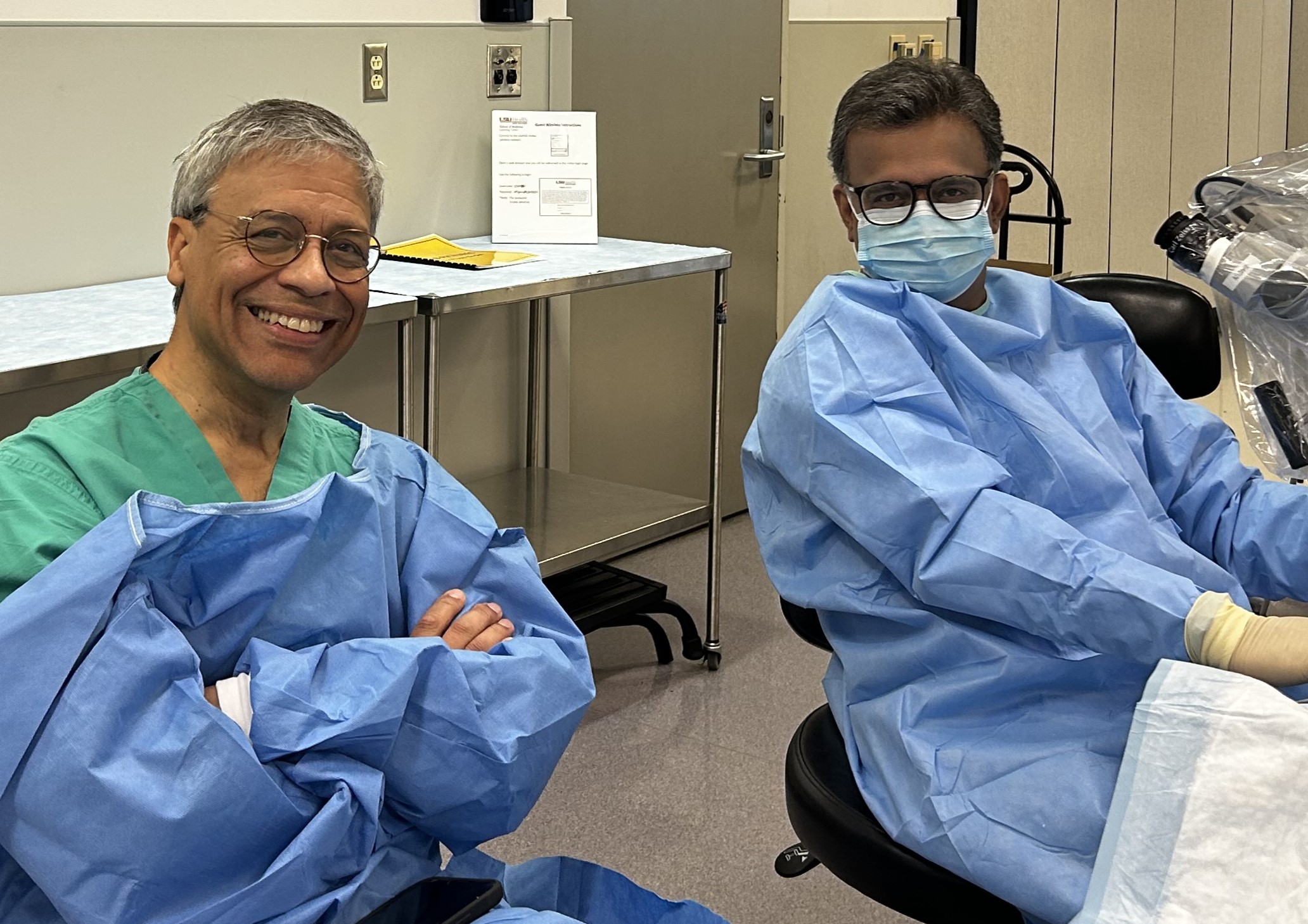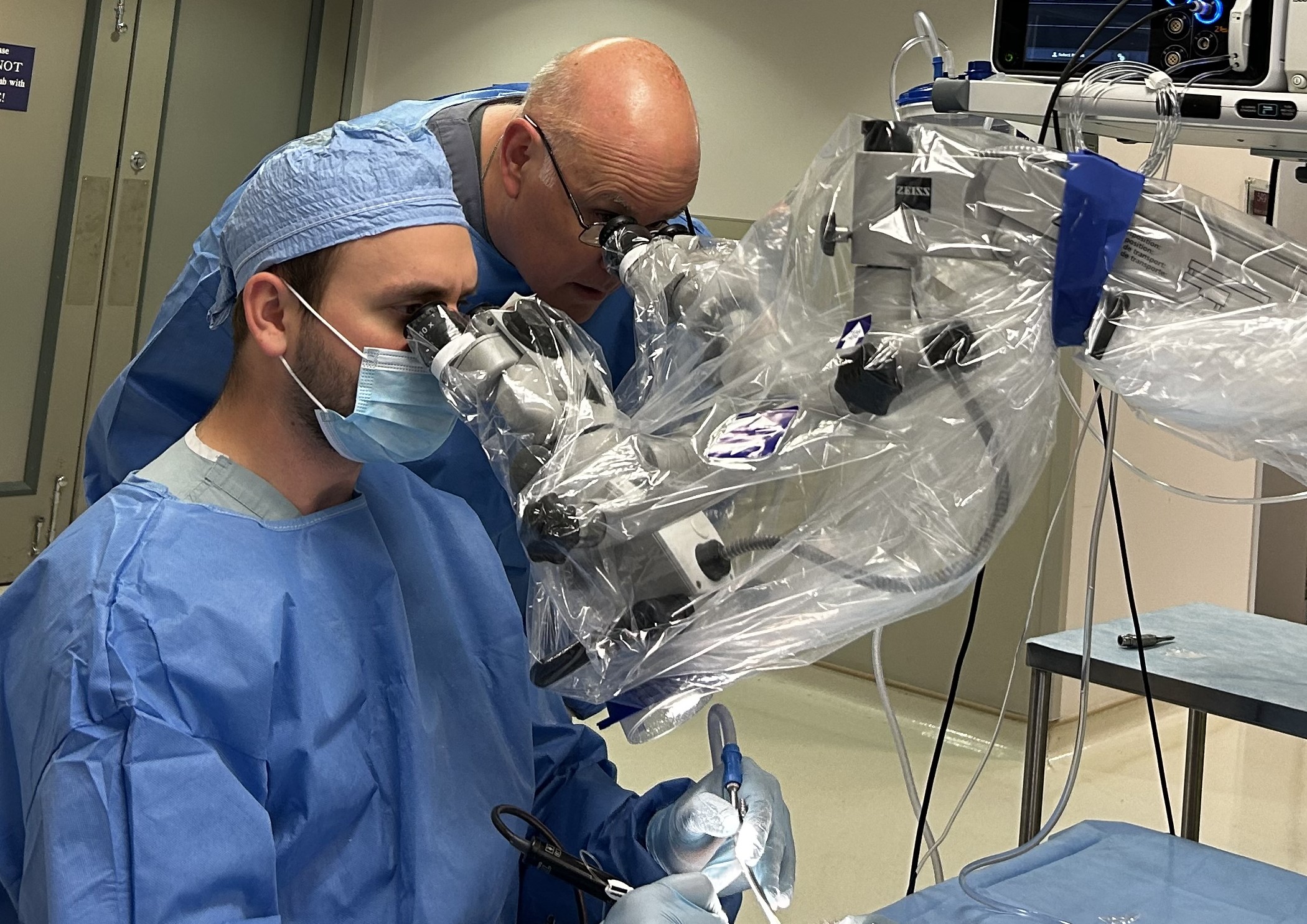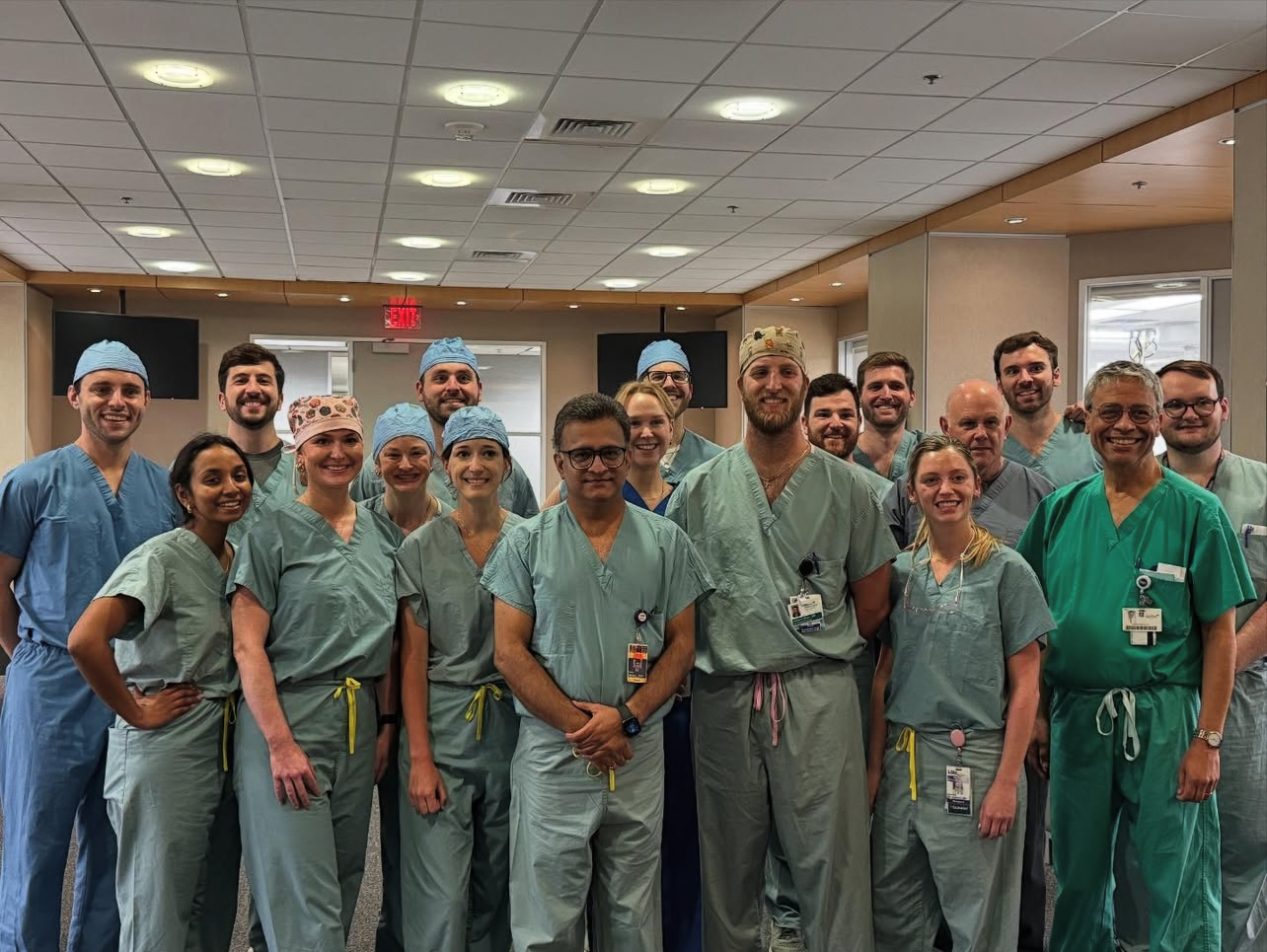Mastering the Drill: LSU ENT’s May Temporal Bone Course

Putting one arm through a light blue scrub sleeve, Dr. Rahul Mehta, Neurotologist at LSUHSC’s Department of Otolaryngology, jokes about his desire for order at home. "I need everything exactly in its place," he says as he pulls the scrub ties. "If something is moved just slightly, I notice."
While he laughs about the chagrin it causes his wife, it's this exact characteristic that makes Dr. Mehta such a dedicated otologist, valuing precision and a focus on minute details. And it's this razor-sharp eye for detail that he impresses on Otolaryngology residents during the Department's Temporal Bone Course, a full day event that he and Dr. Moises Arriaga direct twice a year.
Held at LSUHSC's Center for Advanced Practice (CAP), an on-campus laboratory dedicated to medical learning, the Temporal Bone Course allows residents to put theory into practice. Each with a station set up with a drill and a technoscope, the 16 Otolaryngology residents work through cadaveric temporal bone, honing their surgical technique under the guidance of the faculty.

But it’s not all drilling; the morning begins with Drs. Arriaga and Mehta introducing the learning objectives in a lecture room next to the lab. From identifying surgical landmarks to safe ossiculoplasty techniques, the complexity of otologic surgeries means there’s a lot to cover.
After a roundtable discussion on challenges and surgical complications, the residents scrub up for the drilling component, utilizing advanced drills and microscopes to practice mastoidectomies, endolymphatic sac decompression and inner ear surgery. The Directors and Assistant Professor, Dr. Mark Petitjean, stop at each station, leaning over the microscopes to point out details.
Since 2010, the Temporal Bone course has been held twice—sometimes three times—a year, and is one of the most challenging didactic experiences for Otolaryngology residents given the complexity of the anatomical structure.
Made possible with the use of CAP lab resources, this course was also supported by external sponsors, providing drilling equipment, personnel to assist during the course, and funding for PPE and lab materials. Sponsors for May's course include Carl Zeiss Meditec, Stryker Corporation, MED-EL, Grace Medical and Cochlear Americas.

At the end of the second drilling session, the group pauses briefly for a photo— “nobody blink!”—before gathering their bags, collecting their parking slips, and making the drive back to their rotation city.
For some residents, this was their first time drilling through temporal bone; for others, their ninth or tenth. No matter how many times they practice, ENT residents improve their skills with each Temporal Bone course. After all, surgery on such a complex structure requires the knowledge and ability to—as Dr. Mehta emphasizes—keep everything in its place.
Dylan Hawkins
May 19th, 2025
